 Leading Blog | Posts by Month |
 Leading Blog | Posts by Month |
04.30.17

LeadershipNow 140: April 2017 Compilation
See more on
Posted by Michael McKinney at 10:48 PM
04.28.17

4 Ways to Avoid False Humility
H When we haven’t conquered our pride putting on false humility might seem like the shortcut to the benefits of being a truly humble person. We’ve all met these kinds of people. False humility is nothing but arrogance. In Humility: The Secret Ingredient of Success, Pat Williams, author and senior vice president of the NBA’s Orlando Magic, suggests four ways we can avoid the mask of false humility. 1. Take time to reflect on the person you are—and the person you want to be.
We need to remember that it’s easy over time to become someone we really don’t want to be. Williams cites Stanford professor Roderick Kramer: When I ask respondents to explain why they think the process of experiencing great success will not change them in any fundamental way, they typically say something along the lines of, “Because I know what kind of person I am”….It is as if in finding success they will become merely bigger and better versions of what they are now. They can’t even imagine that they could ever fall from grace. And that, of course, guarantees that some of them will. 2. Ask a few trusted friends to be brutally honest with you. We all need people in our lives who will hold up a mirror and show us who we truly are so we won’t be walking around with the moral equivalent of spinach in our teeth. Truth is a powerful antidote to self-deception and false humility. If you always have people in your life who will tell you the truth for your own good, and if you humbly need their wise counsel, they will save you from a multitude of self-inflicted wounds. 3. Immediately and humbly admit your faults and failures. In other words, apologize without delay. Anyone who tries to achieve anything is bound to make mistakes. The greater your goals, the bigger your potential blunders. Our natural tendency is to deny our failings and shortcomings. We don’t like to admit that we’ve messed up. We prefer to protect our pride and our egos. If you want to recover from a moral failure or a lapse in judgment, the key is o apologize fully, specifically, and humbly. Don’t try to get away with a non-apology apology. Be sincere. Take your lumps. Learn your lessons. 4. Be honestly humble and humbly honest. Don’t inflate your resume—but don’t deflate it either. It’s perfectly wise and acceptable to own yur achievements and state your qualifications. Just don’t brag or take more credit than you’ve earned. There’s never any need for false modesty. False modesty tends to break down authentic humility because it becomes hard to know where your real humility leaves off and your phony humility begins. Yu become so accustomed to devaluing your own talent, accomplishments, and self-worth that you actually lose confidence in yourself. Yu stop speaking up, stop advocating for what you believe, stop pursuing your own goals. In short, you start believing your own self-deprecating falsehoods. Genuine humility is the best policy. False modesty comes from ego and pride. As Canadian humorist Eric Nicol observed, “I am keenly aware of the need to avoid false modesty. Which, like false teeth, can make you talk funny.” Adapted from Humility: The Secret Ingredient of Success by Pat Williams with Jim Denney 
Posted by Michael McKinney at 09:16 AM
04.26.17

Stretch: Unlock the Power of Less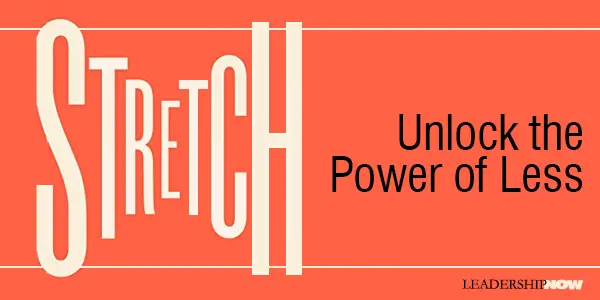
I We are under more pressure than ever to do more. The idea that we can stretch and do more with what we already have begins to remove us from the dehumanizing rat race for resources that is impossible to win. Chasing limits us. Stretch liberates. Especially in uncertain times, “stretching equips us with the abilities to adapt and change when facing a less predictable set of circumstances.” One of the reasons we chase instead of stretch is because fail to see how we might see a resource beyond its traditional use. It’s also easy to assume that if we just had more money we could spend our way out of our problems. It’s often easier to acquire things than to think about how to use those same resources in more productive ways. “The problem is that chasers become so fixated on acquiring resources that they lose sight of what those resources will do for them” so we end up squandering them. We need to place more focus on what we already have. “Stretchers find beauty and richness in places where others struggle to see anything of value. Too often, we understand, interact with, and use things at face value, locking ourselves into conventions that limit possibilities.” Our creativity is sparked by constraints. Filmmaker Robert Rodrigues comments: The creative person with limitless imagination and no money can make a better film than the talentless mogul with the limitless checkbook every time. Take advantage of your disadvantages, feature the few assets you may have, and work harder than anyone else around you. Outsiders can often stretch by seeing possibilities that we can’t because we are the expert or just too close to the issue. “Breadth of experiences helps people stretch.” The well rounded often outperform those who are deeply focused on a single thing especially when trying to solve complex problems. It makes a case for a liberal arts education. We need to repeatedly go outside ourselves. “Temporary departures from our small worlds can come from short bursts of new activities such as reading about another field, finding a hobby, or having conversations with people from different backgrounds.” Stretching is not about being a cheapskate. There is a difference between frugal and cheap. A Stretching Roadmap In summary, here are a dozen ways Sonenshein suggests to help get us into the stretching habit. Just Say No Find a Sleeping Beauty
Go Explore
Take a Break (and Pay Less Attention)
Pick New Neighbors
Appreciate
Shop Your Closet
Scramble the Back Row
Make Midyear Resolutions
Break it Down
Turn Treasure into Trash
Stretch is a very well done book. Good and relevant examples give power to the points he is making. By chasing resources we really limit our potential. Stretching brings out our best. 

Posted by Michael McKinney at 05:55 PM
04.24.17

The Reciprocity Advantage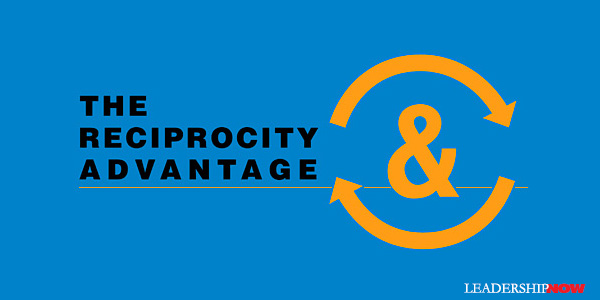
G In The Reciprocity Advantage, authors Bob Johansen and Karl Ronn state that the next competitive advantage will be reciprocity advantage. Reciprocity and advantage will spark new business models for innovation and growth. Most business is transactional but “reciprocity is the practice of exchanging with others for mutual benefit. In a reciprocity-based model, I give you something, and at some later point in time, I trust that I will learn how to get even more value back in return.” It’s what the authors call “smart giving.” “The reason for giving assets away isn’t just about doing good—it’s an important part of an ongoing value exchange spread over time where partners commit to looking out for each other as part of a shared vision.” While the principles they lay out apply both organizationally and individually, they note that reciprocity advantage must be done on a large scale to make a significant difference. “A reciprocity advantage is a chance to do good while also doing very well. A reciprocity advantage is delicate to achieve and maintain. Go too wide, and you’re a philanthropist. Go too narrow, and you’ll be back doing transactions.”
You begin by defining your core business. This is where you will find the right-of-way assets you can share. Not all should be shared. You must do this inventory and then decide later what to keep and what to share. Then reinvent your business as a service. The rights-of-way that your core needs to survive disruption are not to be shared. This would hurt your business. Instead, invest to prevent long-term obsolescence. Finally, redefine your business as an experience. Having attained clarity on what you do as a service, focus on the users of your service. What are you being hired to do? By looking for services that people want but don’t yet have, you will find new ways to complement your core business. The rights-of-way that enable this are the core of the new reciprocity business. 2. Find the Best Partners
3. Learn by Experimenting
4. Scale It
So, how will you know if your idea is desirable, viable and ownable? The authors have created a scorecard to direct your development efforts. Each of the three areas is divided into two opposing measures: Is it desirable? To scale it must be transformational and intuitive. Is it viable? To be viable it must be affordable and structurally attractive. Is it ownable? It needs to be feasible at your intended scale and have a source of sustainable competitive advantage. The breakthrough occurs when you resolve the three pairs of opposing forces. When you have all six parts working for you, run! Your idea is now no longer risky. Until then use keep experimenting cheaply. The authors conclude, “We believe that givers will be much better at creating reciprocity advantage for their companies and for themselves.” 
Posted by Michael McKinney at 10:22 PM
04.19.17

Ego Free Leadership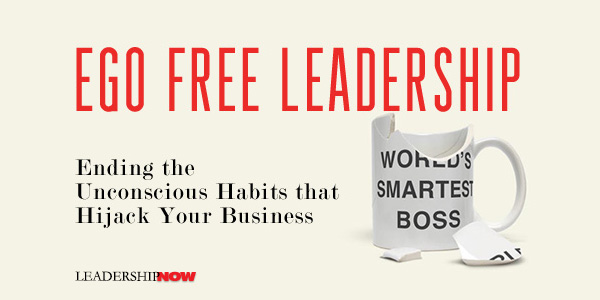
E Each of us has beliefs and fears about our value, and they cause defensive and/or self-promotional behaviors when under stress. Whether in a meeting, a presentation, or a relationship, part of our attention—sometimes all of it—is preoccupied by our view of our self. Are we competent? Respected? Intelligent? Liked? Attractive? Included? Each of us has a set of criteria we unconsciously judge ourselves against. When we measure up, we feel pride, even superiority. When we don’t, we feel uncomfortable, stressed, often afraid.Ego Free Leadership is co-written by executive coach Shayne Hughes, president of Learning as Leadership and Brandon Black the retired CEO of Encore Capital Group. The book tracks Black’s journey from acknowledging to changing the destructive elements of his ego. Once he committed to change, the transformation began in his team and throughout the culture of the Encore organization. Quite effectively, Hughes and Black go back and forth sharing their perspectives on the unfolding transformation. Naturally, it’s not a step-by-step prescription, but it is instructive to see the process because we all share similar issues and thinking. They begin by debunking the "ego is good" myth. Our egos limit us as we try to protect it in various ways. “Our ego can’t stand failure, incompetence, or weakness, so it avoids what is truly challenging us. When we feel at the mercy of what is happening around us we react often distorting reality. “We read criticism, abandonment, judgment, competitiveness, and aggression into a situation where it may not exist.” We seek to fix what we believe is causing our distress resorting to learned behaviors that really don’t serve us well. “Anytime we know intellectually what to do, but our actual behavior is inconsistent or in contradiction, it is a sign we are being short-circuited by our egosystem. These behavioral derailers come in many forms: conflict avoidance, procrastination, defensiveness, people pleasing, shutting down, being argumentative, just to name a few. Upon examination, these ingrained knee-jerk reactions invariably prove to be predictable and recurrent.” It’s not just the way we are, it’s the way we have learned to be. In order to defuse our reactive behaviors, we need to identify the underlying triggers that created our behaviors in the first place. Here are some insights from Ego Free Leadership: Intellectually it’s easy to decide that learning, growing, or creating authentic relationships is more important than not appearing incompetent, failing, or being hurt. Unfortunately, this is not how we feel at a visceral level, or we wouldn’t be continuously repeating these dysfunctional behaviors. Transformation comes when we consciously connect with goals not tied to our self-worth and use this emotional clarity to inspire action in the present moment. As the authors admit no organization (or individual) can be completely ego-free, but we can manage it better. In every situation we have a choice. We can either give in to our ego or break free of the limits it imposes on us. They recommend:
The lessons and insights shared in Ego Free Leadership could have a profound effect on any reader.  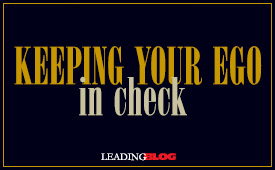 
Posted by Michael McKinney at 11:16 PM
04.14.17

Conflict without Casualties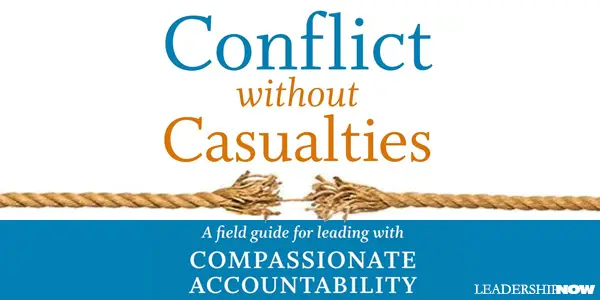
C Conflict is energy, and can be used in positive or negative ways. Negative conflict becomes drama, and it is costly to companies, teams and relationships at all levels. In fact, according to a Gallup Poll, negative conflict drains the U.S. economy by about $350 billion a year in lost productivity and wasted energy. In Conflict without Casualties, author Nate Regier believes that the misuse of conflict energy is the biggest crisis facing our world, and that we haven’t even begun to harness the creative potential of conflict. When people embrace the fullest meaning of compassion as a process of “struggling with” others in creative conflict, they can transform lives, companies, and the world. It is understandable that we try to avoid conflict considering all of the drama and negative fallout that always seems to accompany it. But Regier says if we use conflict correctly, we can use it to create. “Eliminating the casualties of conflict cannot happen by repressing the conflict and just ‘being nice.’ It happens by stewarding the energy inherent in conflict to make something positive, even amazing.” That seems like a tall order, but it makes sense. Compassionate Accountability The way forward is to practice Compassionate Accountability. Compassionate Accountability is a method for resisting the negative pull of drama—“I gotta win.” Negative conflict becomes drama. “Drama is the mismanaging of the energy of conflict. It diverts energy towards the pursuit of self-justification, one of the strongest human urges and the one that almost always gets us into trouble.” (Chapter 2 on drama is one of the clearest discussions of drama I’ve read.) To be compassionate is to struggle alongside with others; to struggle with instead of against. “Compassion is the result of people taking ownership of their feelings, thoughts and behaviors, and choosing to spend the energy of conflict pursuing effective solutions that preserve the dignity of all involved. Compassion is more than care and concern for others. It’s about the willingness to get in the trenches and struggle together as an equal with others.”
Openness
Resourcefulness
Persistence
These three skills are a process that starts at Open, moves to Resourceful, and finally to Persistence. They are three interdependent ways of feeling, thinking, and acting that work productively together. When Regier’s model is placed inside the Drama Triangle (developed by Steven Karpman), the author creates a useful visual for understanding where we often end up if we don’t intentionally stay the Compassionate Accountability course. Regier writes: “Drama inevitably pushes us into corners, where we cling to distorted worldviews that compel us to do the same thing over and over, expecting different results. Compassion, on the other hand, keeps us moving, searching, nimble, effective, and capable of adapting to change.” It also keep us from being mired inside our own head and thus limiting our responses and our ability to reframe the conflict. We get stuck.  It would seem that if you stop at Persistence then you become stagnant and eventually irrelevant. A state of non-judgmental receptivity would seem to go hand-in-hand with progress, the inevitability of change, and the understanding of others. “As a species, human beings seem to have a very difficult time returning to Openness in order to keep the cycle going. We take up residence at Persistence, which inevitably morphs into Persecutor as we fight to protect what we’ve built and save ourselves from the consequences of our own creation.” He adds, “Each point on the Compassion Cycle has a purpose. When that purpose is fulfilled, it’s time to move. Lingering after the purpose has been achieved is a recipe for stagnation and drama.” If you want to end the drama in your life or organization then you have to replace it with something else. Compassionate Accountability is the cure. Regier concludes the book with a section devoted to implementing this concept into everything you do. A very useful user’s manual. 
Posted by Michael McKinney at 06:01 PM
04.07.17

The 9 Behaviors of Great Problem Solvers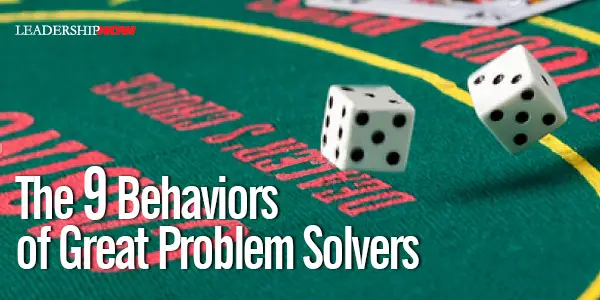
E Naturally we like simple solutions. But a simple guess is not the same thing as a simple solution. A simple solution is easy to implement. But a simple guess that doesn’t get to the real issues is difficult, expensive, and wasteful to implement. We need to stop guessing. “Every unsolved problem is bottlenecked by not understanding the root cause at a fundamental level.” In Stop Guessing, Nat Greene explains 9 behaviors that great problem-solvers use to solve hard problems. Here are his behavior summaries: 1. Stop Guessing It’s natural for us to guess. The first thing you must do to start solving problems or keep from making them worse is to stop guessing. 2. Smell the Problem Get out and walk around using your natural senses and tools available to you to develop a strong pattern of failure. Ask relevant, thought-provoking questions about the specific problem to guide you to collect information and look for very specific patterns, rather than shotgunning and looking at everything in the system. 3. Embrace You Ignorance It’s what you don’t know that lies between you and the solution. Great problem-solvers not only admit their ignorance but also embrace it and ask questions others might find “stupid,” to shatter old assumptions about the problem. 4. Know What Problem you’re Solving Often, people work on the wrong problem entirely by making some implicit assumption about what’s causing it. Great problem-solvers invest time upfront to make sure the problem they’re working on is well defined, measureable as a variable, and represents precisely what is wrong with the system or process. 5. Dig into the Fundamentals This means learning how the process works, both by understanding the process itself and by understanding some of the fundamental science behind it. By focusing on what controls a problem, you’ll be able to limit your digging to the parts of the process and the science that are relevant, rather than trying to wrap your arms around the entire thing at once. 6. Don’t Rely on Experts Utilizing subject-matter experts is crucial to understanding a complex system and its underlying functionality and science. Unfortunately, most people delegate responsibility for solving the problem to those subject-matter experts, rather than driving the problem-solving process themselves. Great problem-solvers always view experts as collaborators rather than saviors. 7. Believe in a Simple Solution When confronting complex problems, it can be comforting to believe that the solution will be complex as well. But by not believing in a simple solution, people often give up long before they’ve gone through the rigor required to find the simple solution that lies at the root cause, to great cost and detriment. Great problem-solvers will have the belief and tenacity to keep solving until they’ve found the root cause. 8. Make Fact-Based Decisions Avoid making opinion-based decisions: anything that relies on a vote, on authority, or on some subjective ranking system of what decision to make is one of these opinion-based decisions, and it leads problem-solvers astray. 9. Stay on Target When problem-solvers dive deep into a problem, they too frequently seek to expand the number of possible root causes, so they can test them. Great problem-solvers measure the drivers that most immediately control the problem in order to determine whether those subvariables are in control, and in doing so are able to quickly eliminate most possible root causes and avenues of inquiry without having to dive deeper into them. Greene digs deeper in to each of these in separate chapters. Strong problem-solving methods will discourage guessing, provide lots of structure to develop a pattern of failure, and guide you to understand how the process works. Begin problem solving and not solution-guessing. 
Posted by Michael McKinney at 10:59 AM
04.05.17

Radical Candor
R The very heart of being a good boss is a good relationship, writes Kim Scott in Radical Candor. We need Radically Candid relationships with those we work with and because this is often scary and can be emotionally taxing, we resort to be ruinously empathetic or obnoxiously aggressive or manipulatively insincere. Of course, establishing trust with each person that reports to you is fundamental to radical candor. Radical Candor happens when you put Care Personally and Challenge Directly together. Care Personally refers to the fact that to have a good relationship “you have to your whole self and care about each of the people who work for you as a human being. Challenge Directly “involves telling people when their work isn’t good enough—and when it is. Challenging people might seem the opposite of Care Personally, but “challenging people is often the best way to show them that you care when you’re the boss.” Scott explains that she chose the word Radical “because so many of us are conditioned to avoid saying what we really think. This is partially adaptive social behavior; it helps us avoid conflict or embarrassment. But in a boss, that kind of avoidance is disastrous. She chose Candor because it is “necessary to communicate clearly enough so that there’s no room for interpretation, but also humbly.” Caring Personally is about acknowledging that we are all people with lives and aspirations that extend beyond those related to our shared work. It’s about finding time for real conversations; about getting to know each other at a human level; about learning what’s important to people; about sharing with one another what makes us want to get out of bed in the morning and go to work—and what has the opposite effect. Radical candor is not an invitation to be a jerk, or to nitpick, or to simply schmooze. (“A good rule of thumb for any relationship is to leave three unimportant things unsaid each day.”) What you say gets “measured at the listener’s ear, not at the speaker’s mouth.” Everything must be delivered in good faith. 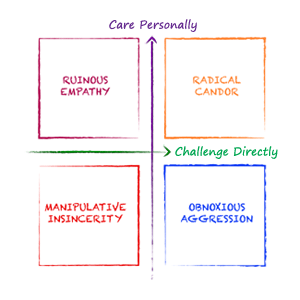 Scott has created a framework to help you be more conscious of the kind of guidance you are getting, giving, and encouraging. There are two dimensions to good guidance: Care Personally and Challenge Directly. It is a way to gauge praise and criticism. Scott has created a framework to help you be more conscious of the kind of guidance you are getting, giving, and encouraging. There are two dimensions to good guidance: Care Personally and Challenge Directly. It is a way to gauge praise and criticism.
When you criticize someone without taking the time to show care, your guidance feels like Obnoxious Aggression. It’s what happens when you challenge but don’t care. It’s praise that doesn’t feel sincere or criticism that isn’t delivered kindly. “When bosses belittle employees, embarrass them publically, or freeze them out, their behavior falls into this quadrant.” And keep this in mind: “Almost nothing will erode trust more quickly than using one’s insights into what makes another person tick to hurt them.” Manipulative Insincerity is what happens when you neither care nor challenge. It’s an attempt to push the other person’s emotional buttons in return for some personal gain. It’s praise that is non-specific and insincere or criticism that is neither clear nor kind. Ruinous Empathy is what happens when you care but don’t challenge. “When bosses are too invested in everyone getting along, they also fail to encourage the people on their team to criticize one another for fear of sowing discord. They create the kind of work environment where ‘being nice’ is prioritized at the expense of critiquing, and therefore, improving actual performance.” It is praise that isn’t specific enough to help the person understand what was good or criticism that is sugarcoated and unclear. You may think Radical Candor would never work on your organization’s or team’s culture. And it probably won’t unless you first invest in the people you work with and show them that you care personally. But here’s the big hurdle: Start by explaining the idea and then asking people to be Radically Candid with you. Why you first? First, it’s the best way to show that you are aware that you are often wrong and that you want to hear about it when you are; you want to be challenged. Second, you’ll learn a lot—few people scrutinize you as closely as do those who report to you. Third, the more firsthand experience you have with how it feels to receive criticism, the better idea you’ll have of how your own guidance lands for others. Fourth, asking for criticism is a great way to build trust and strengthen your relationships. (Important: “If a person is bold enough to criticize you, do not critique their criticism.”) Scott carefully details ways to create a climate in which Radically Candid relationships can flourish. She provides many (most first-hand) examples of what worked and what didn’t work. From her experiences at Apple and Google, she observed that “a boss’s ability to achieve results had a lot more to do with listening and seeking to understand than it did with telling people what to do; more to do with debating than directing; more to do with pushing people to decide than with being the decider; more to do with persuading than with giving orders; more to do with learning than with knowing.” And there’s an app: Candor Coach. This app will show you how quick, frequent, face-to-face conversations can help you build a culture of Radical Candor. It will start by teaching you to ask for and give feedback. It will help you track the conversations you’re having with each person on your team so that you can see where you need to improve.   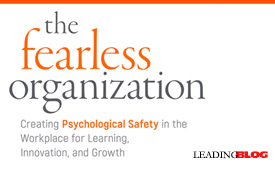
Posted by Michael McKinney at 09:32 PM
04.03.17

Are You Living an Adult Story?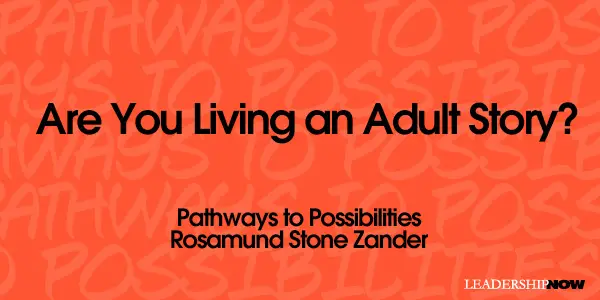
I This need for leaders to rethink who they are gets to the heart of what Rosamund Stone Zander describes in Pathways to Possibility. Often, our growth requires that we live a new story. We are not “trained to think of ourselves as governed by stories made up by younger iterations of ourselves, frozen in time.” We need to rewrite the stories to reflect life as it is now. “I believe that when we become aware of patterns in our behavior, when we learn to identify and rewrite the stories that give us our identities, we will gain passage, at any age, into a new phase of adulthood. In this territory of maturity, where old fear-based pattern no longer hold us back, we will, I wager, do what we now think of as remarkable, even magical, things.” We all have a point of view about how life should go and they are often illogical. But when they are we produce reasons for why we do and think like we do even if it has no basis on our current reality. They hold us back. What children’s stories have in common is survival anxiety. We are living a story made up by a child when we are frightened about the future, are ready to run, feel the need to control others, act out of insecurity, and are unable to take criticism of any kind. The stores we tell ourselves are generally adopted unknowingly from the environment in which we grew up and are not under the control of the reasoning mind. To move forward, we have to uncover the story and tell a new one. Zander repeatedly states that new habits are formed in an environment of love. How do you know if you are living in a story crafted by the mind of a child?
In short, a child’s stories are I-centered, concrete, fear-based, scarcity-minded, identity-bound, personal through and through, and indisputable—self-centered—my way. When we are operating from the adult narrative:
Zander relates three rules that coach Pete Carroll gave his players. Zander says that these three rule will help support the adoption of an adult story. “These three rules,” she writes, “almost guarantee that the person who follows them is saved from the distraction of survival instincts, such as possessiveness, entitlement, and winning over others, and feelings of helplessness, fear and rage when things don’t turn out the way he planned. Here are the three rules with Zander’s comments: Rule 1: Protect the Team: A perfect instruction to remind a player that he is not, in fact, the center of the universe, and to encourage him in all matters related to the game to adopt and live into a story of collaboration. Rule 2: No Negative Talk. No Whining and Complaining: This rule establishes that the game is played in a mode of possibility and not one of survival where players are out for themselves and can be weakened by a victim story. It requires that people be responsible for the effect of their words and their moods, which ensures that the team maintains energy. Rule 3: Be Early: What powerful little words! What an amazing third rule! The player who lives by “be early” puts himself in charge of his life. If you decide to be early, you are always in charge; you will show up as a considerate person as well as a paragon of responsibility. 
Posted by Michael McKinney at 10:11 PM
04.01.17

First Look: Leadership Books for April 2017Here's a look at some of the best leadership books to be released in April.    
For bulk orders call 1-800-423-8273  Build your leadership library with these specials on over 39 titles. All titles are at least 40% off the list price and are available only in limited quantities. "A book must be the axe for the frozen sea within us." — Franz Kafka
Posted by Michael McKinney at 07:58 AM
|
BUILD YOUR KNOWLEDGE


How to Do Your Start-Up Right STRAIGHT TALK FOR START-UPS 
Grow Your Leadership Skills NEW AND UPCOMING LEADERSHIP BOOKS 
Leadership Minute BITE-SIZE CONCEPTS YOU CAN CHEW ON 
Classic Leadership Books BOOKS TO READ BEFORE YOU LEAD |
|